|
Join us in congratulating Executive Director Christina Hartlieb on five years at the Harriet Beecher Stowe House!
Below Christina reflects on what has changed (and stayed constant!) in the past five years and looks with excitement toward the future of the site: --- May 30, 2017, was my first day on the job at the Harriet Beecher Stowe House. That week I rearranged office space, gave my first tour, set up new email accounts, and watched Cohee Construction remove the floorboards upstairs to reveal the location of the original staircase. So much has happened in the past 5 years. I am amazed at the wonderful work we have accomplished. Expanding educational programming, hours of operation for public tours, staffing, and community partnerships. Creating new specialty tours, four panel exhibits, and two video exhibits to enhance our stories and share our legacy. Installing an outdoor classroom. Introducing a new logo and an overall interpretive theme – Power of Voice. I am excited to serve as the Executive Director of this dynamic historic and educational resource. This week, I spent time approving a grant report, answering research questions, strategizing about furniture removal for the next phase of restoration, sending out invitations to an event, and watching Cohee Construction install replica 1840s windows. The next 5 years holds the potential for even more momentous change as we continue to serve our community as a “lighthouse symbolizing good will and better understanding.” Thanks for letting me be a part of it. -Christina Hartlieb
1 Comment
Organizations celebrate Cincinnati suffragists with National Votes for Women Trail historic markers3/25/2022 CINCINNATI – Fifth Third Bank, N.A., the Harriet Beecher Stowe House and Cincinnati Parks will come together at 9 a.m. March 25 to dedicate three new historic markers on the National Votes for Women Trail. The markers will be placed near Fifth Third’s headquarters on Fountain Square, at the top of the Elsinore Steps near the Cincinnati Art Museum and in Walnut Hills in front of the Giminetti Baking Co. building, one block south of the Harriet Beecher Stowe House. The celebration will take place at the Fifth Third Museum in the Fifth Third Center on Fountain Square.
“Ohio played a crucial yet largely forgotten role in the fight for women’s voting rights,” said independent scholar and NVWT liaison Katherine Durack. “These markers highlight decades of activism in Cincinnati despite prevailing anti-suffrage sentiment at the time in Hamilton County.” Sponsored by the National Collaborative for Women’s History Sites, the National Votes for Women Trail seeks to recognize and celebrate the enormous diversity of people and groups active in the struggle for women’s suffrage. The trail consists of two parts: a database with digital map and a program of historic markers for about 200 women’s suffrage sites across the country, funded by the Pomeroy Foundation. Cincinnati’s historic markers will recognize the dedication and efforts of:
2022 marks the 102nd anniversary of the adoption of the 19th Amendment, which prohibited denying any U.S. citizen the right to vote on the basis of gender. The adoption was the result of the tireless efforts by suffragists over seven decades. To learn more about the NVWT or the specific locations of the NVWT markers in Cincinnati, visit www.nvwt.org. About Fifth Third Fifth Third Bancorp is a diversified financial services company headquartered in Cincinnati, Ohio, and the indirect parent company of Fifth Third Bank, National Association, a federally chartered institution. As of Dec. 31, 2021, the Company had $211 billion in assets and operates 1,117 full-service Banking Centers, and 2,322 Fifth Third branded ATMs in Ohio, Kentucky, Indiana, Michigan, Illinois, Florida, Tennessee, West Virginia, Georgia, North Carolina and South Carolina. In total, Fifth Third provides its customers with access to approximately 54,000 fee-free ATMs across the United States. Fifth Third operates four main businesses: Commercial Banking, Branch Banking, Consumer Lending, and Wealth & Asset Management. Fifth Third is among the largest money managers in the Midwest and, as of Dec. 31, 2021, had $554 billion in assets under care, of which it managed $65 billion for individuals, corporations and not-for-profit organizations through its Trust and Registered Investment Advisory businesses. Investor information and press releases can be viewed at www.53.com. Fifth Third’s common stock is traded on the NASDAQ® Global Select Market under the symbol “FITB.” About the Harriet Beecher Stowe House The Harriet Beecher Stowe House celebrates the life, family, and legacy of author and activist Harriet Beecher Stowe. Stowe is known primarily for her book “Uncle Tom's Cabin,” and its contributions to the abolition movement through the Civil War. We also interpret the 20th century history of the house as a tavern listed in “The Negro Motorist Green Book,” a guidebook for African Americans traveling in segregated America. Located in Cincinnati’s historic Walnut Hills neighborhood, the Harriet Beecher Stowe House hosts educational tours, lectures, and discussion groups. About Cincinnati Parks Named one of the top 10 U.S. park systems by the Trust for Public Land, Cincinnati Parks is a historic and award-winning park system comprising over 5,000 acres, 100 park sites and numerous gardens, scenic overlooks, decorative fountains and water features, nature preserves, miles of hiking trails, performance venues, rental facilities and public art. Cincinnati Parks is led by a five-member Board of Park Commissioners whose mission is to conserve, manage, sustain and enhance parks’ natural, cultural resources and public green spaces for the enjoyment, enlightenment and enrichment of the Cincinnati community. The Parks system has 250 full- and part-time employees and an annual budget of $27 million. The system’s key operational divisions are Operations & Facilities, Natural Resources, Planning and Design, Financial Services, Human Resources, and Communications, Engagement and Volunteers. About the William G. Pomeroy Foundation The William G. Pomeroy Foundation® is committed to supporting the celebration and preservation of community history; and to raising awareness, supporting research and improving the quality of care for patients and their families who are facing a blood cancer diagnosis. Established by Trustee Bill Pomeroy in 2005 to bring together his two greatest passions, the Pomeroy Foundation is a private, grant-making organization located in Syracuse, N.Y. As the nation’s leading funder of historic roadside markers, the Pomeroy Foundation has awarded nearly 1,700 grants for markers and bronze plaques in 44 states. To learn more about the Pomeroy Foundation, visit wgpfoundation.org. New Information & New Mysteries as Restoration Continues at the Harriet Beecher Stowe House2/2/2022 The external restoration at the Harriet Beecher Stowe House is continuing through the winter months and will extend into the spring. Below is a detailed update from Chris Buchanan, Restoration Project Coordinator, on the process of investigating the layers of history hidden in the doors and locks at the house. Interested in past blog posts about the restoration? You can find them HERE. From Chris: The last time Rob and his guys were at the house, they took all of the original doors that were stored in the basement and brought them back to their shop. I asked them to do some paint stripping in the areas around the locks to uncover evidence of the original locksets, and it’s revealing some very interesting information.
The front door, which was added by the Monforts as part of the 1908 remodeling, has an oversized Shawk lock that was mounted upside down. Very odd. On one of the pair of tall doors that were originally installed between the Parlor and the Dining Room is an exact outline of that front door lock, mounted right side up! My current theory is that the Monforts removed the parlor doors as part of the 1908 remodeling, and stuck them in the basement. They removed the big, antique lock from the door, sent it out to be cleaned and checked over, and then repurposed it on their new front door.
Interested in past blog posts about the restoration? Keep reading HERE. About the author:
Chris Buchanan is the Restoration Project Coordinator for the Ohio History Connection and has overseen the restorations of many historic sites throughout the state of Ohio. In Lyman Beecher’s study, one of the front rooms at the Harriet Beecher Stowe House, one finds two secretary desks, each topped by a bookcase closed with a pair of glass doors. One has a plaque on it saying it was Dr. Beecher’s desk, an unverifiable statement, although we are told it came to the Stowe House from the Lane Seminary, where he was the President for its first 20 years. The books on its shelves are a miscellaneous collection, some Great Books, some not, meant to represent ones that might have been on the shelves in his time. One exception is the two-volume set The Autobiography of Lyman Beecher, edited for Harvard University Press by Barbara Cross. The publisher describes it as “… the colorful self-portrait of a central figure in American Protestantism... The Autobiography is a rich mosaic of records, reminiscences, and correspondence gathered by Beecher’s many children (among them, Harriet Beecher Stowe and Henry Ward Beecher).” The other secretary holds 45 book titles, of which 27 are by members of the Beecher family, while the rest treat them as subject matter. It’s a sampling of the literary output of a family in which nine of the thirteen children became writers, and it calls to mind two famous quips about them. Reverend Leonard Bacon wrote in 1863, the same year Lyman Beecher died, “This country is inhabited by saints, sinners, and Beechers,” and Unitarian minister Theodore Parker called Lyman “the father of more brains than any other man in America.” Those represented by just one title are: Lyman’s Six Sermons on Intemperance (1829); Edward’s The Papal Conspiracy (1855); and Charles’s Harriet Beecher Stowe in Europe (1896). There is one non-Beecher represented, Calvin Stowe, who edited and wrote the introduction to James Barr Walker’s Philosophy of the Plan of Salvation a Book for the Times by an American (1850). Henry Ward has 7 titles to his credit: Evolution & Religion (1855), Norwood: Village Life in New England (1868), Prayers from Plimouth (1887), Lectures to Young Men (1856), Plymouth Collection of Hymns & Tunes (1855), Beecher Sermons (1872), and Star Papers, or Experiences of Art & Nature (1855). Norwood was Henry Ward’s only venture into fiction, as Wikipedia explains: “In 1865, Robert E. Bonner of the New York Ledger offered Beecher twenty-four thousand dollars to follow his sister's example and compose a novel… Beecher stated his intent for Norwood was to present a heroine who is "large of soul, a child of nature, and, although a Christian, yet in childlike sympathy with the truths of God in the natural world, instead of books…” One review of the 549-page tome said, “to read through a novel so very long, so apparently interminable, and so amazingly dull as we are reluctantly constrained to consider Norwood to be, is a real triumph of endurance.” Not surprisingly 17 titles are from Harriet’s pen, including three editions of Uncle Tom’s Cabin. As subject Harriet is honored with 13 biographies, far outstripping the two of Henry Ward (Life of Beecher by Abbot & Halliday (1887) and Henry Ward Beecher: An American Portrait by Paxton Hibben (1942), and the one of the entire Beecher family, Milton Rugoff’s The Beechers (1981). One of the titles about Harriet deserves special mention: Harriet: A Play in 3 Acts (1945) by married writing team Florence Ryerson and Colin Clements, which ran for a year on Broadway in 1943. It was dedicated “for Eleanor Roosevelt” and starred Helen Hayes, of whom Time Magazine wrote “But Actress Hayes, acting with her usual skill, aging with her usual art, creates, if not a great and rounded woman, a bustling housewife who is also sore beset.” Finally, there is one title on the shelves that is only distantly related to the Beechers – Herland (1915) by feminist Charlotte Perkins Gilman, which Wikipedia describes as a utopian novel that “describes an isolated society composed entirely of women, who bear children without men (parthenogenesis, a form of asexual reproduction). The result is an ideal social order: free of war, conflict, and domination.” Gilman’s great-grandfather on her father’s side was Dr. Lyman Beecher, and she revered her great-aunt Harriet Beecher Stowe. Four of the nine members in the Beecher party that arrived in Cincinnati in 1832 produced in their lifetimes 90 titles. Wikipedia credits Lyman with 17 published works, daughters Catherine and Harriet with 22 and 34 respectively, and son Henry Ward with 17. Add to that the 26 titles contributed by sons Edward (12) and Charles (14), and it comes to 116 titles! Visitors can find many books by or about Harriet for sale at the HBS House bookstore. Several others described above are in the collection of the Cincinnati and Hamilton County Public Library housed on the second floor. I encourage you to look for them when you come for a tour. About the author:
Frederick Warren is a docent at the Harriet Beecher Stowe House, as well as a tour guide for the Friends of Music Hall. He is a retired estimator for a book printing and binding firm in Cincinnati. Are your students ready to be inspired? Do they know that one of the most influential authors on the globe was once a 20-something teacher, magazine writer, and mom in Cincinnati?
The Harriet Beecher Stowe House offers two standards-based programs for Junior High and High School Students. Both of these programs can be delivered in the format that is best for you:
8th grade, HS literature, HS US history MUSEUM / SCHOOL / ONLINE Helps students to discover information through primary and secondary sources, and emphasizes Harriet's role in media communication. Writing and critical thinking are key components of the activities. 19th Century Reformers through the Beecher Family Lens APUSH and/or HS US history MUSEUM / SCHOOL / ONLINE Presents information on the Beecher family siblings and their social reform causes along with the Lane Rebels (1834 abolitionist debaters). Students play a role in this program by engaging with the ideals of reform movements, making connections between different causes, and formulating questions for further discussion. For additional information or to schedule your class – visit our website or contact Christina at [email protected]. Have a colleague who would be interested in our 3rd or 4th grade programs? See all grade level programs on our website here: https://www.stowehousecincy.org/student-groups.html People taking a tour of the Stowe House may notice a framed photo that hangs near the foot of the staircase, just visible above a large monitor screen. It shows a sculpture of President Abraham Lincoln and Harriet, highlighting their difference in stature. Located in Hartford, CT, this sculpture by Bruno Lucchesi depicts the meeting of President Lincoln and abolitionist Harriet Beecher Stowe in Washington, D.C. in 1862. A plaque attached to the sculpture's mounting is inscribed: “Lincoln Meets Stowe.” This is the meeting in which Lincoln is reported to have greeted Harriet saying, “So you’re the little woman who wrote the book that made this great war!” Though often related, the story and the quote are considered by scholars to be an apocryphal anecdote, that is, one for which there is no writing by either Lincoln or Stowe reporting it. English professor Daniel R. Vollaro went so far as to claim in a 2009 article in The Journal of the Abraham Lincoln Association that the quote was invented by the family later to burnish Harriet’s legacy. In fact, the story was first reported by Harriet’s son Charles Edward, and her grandson Lyman Beecher Stowe in their 1911 book Harriet Beecher Stowe: The Story of Her Life. They are careful to say that it was “Mrs. Stowe, in telling of her interview with Mr. Lincoln…dwelt particularly on the rustic pleasantry with which the great man received her.” Their account relates many details of the meeting and the conversation. Historians have wondered why there is no earlier account of the meeting. Her son Charles wrote a biography of his mother, The Life of Harriet Beecher Stowe, in 1889 in which the only mention of it is in reproducing a letter written by Harriet to her husband. However, it is important to remember that this work was written with the participation of its subject – Harriet. She wrote an introduction that reads: “At my suggestion and with what assistance I have been able to render, my son, Ross Charles Edward Stowe, has compiled from my letters and journals, this biography. It is this true story of my life, told for the most part, in my own words and has therefore all the force of an autobiography. It is perhaps much more accurate as to detail & impression than is possible with any autobiography, written later in life.” As for accounts of the meeting at the time by those who were present, Harriet’s letter to her husband Calvin, says only, “I had a real funny interview with the President…the particulars of which I will tell you.” Her daughter Hatty wrote to her twin sister “It was a very droll time that we had in the White House,” saying that she and her mother were “ready to explode with laughter…(but)…were trying to keep it in.” Nancy Koester in her biography entitled Harriet Beecher Stowe: A Spiritual Life discusses a letter written by HBS to her daughters in the spring of 1862, and in so doing sheds light on why Harriet herself did not mention Lincoln’s greeting. Koester writes “Harriet was distressed that her daughters, especially the twins, seemed so frivolous and worldly... Then Harriet got down to cases. How often she had heard her daughters indulge in mockery!... How could they go to church and pray ‘Our Father’ and in the very next breath make fun of others?” Is it not obvious that to Harriet it would be the height of disrespect and lack of refinement to “make fun” of Lincoln by reporting a facetious and jocular remark? After all she had traveled to Washington to meet the President with the serious purpose of encouraging him to issue the Emancipation Proclamation. The 1911 account has Harriet recalling her words “Mr. Lincoln, I want to ask you about your views on emancipation.” About the author:
Frederick Warren is a docent at the Harriet Beecher Stowe House, as well as a tour guide for the Friends of Music Hall. He is a retired estimator for a book printing and binding firm in Cincinnati. |
Archives
March 2025
Categories
All
|
|


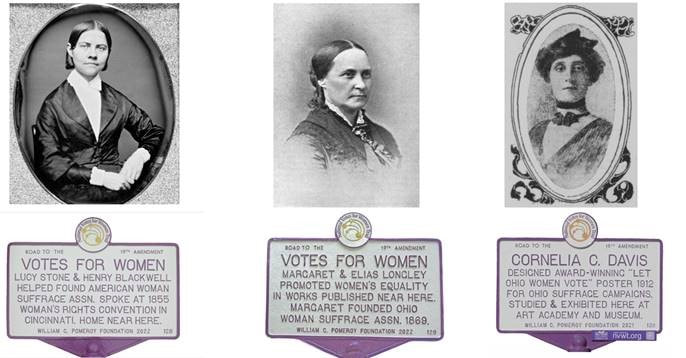
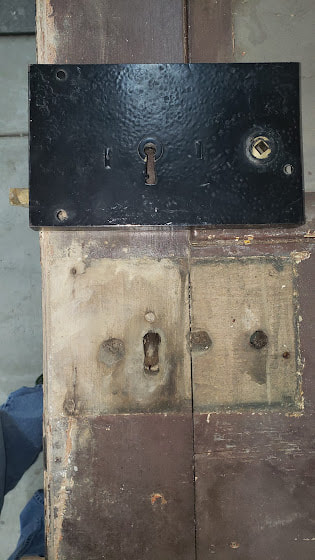
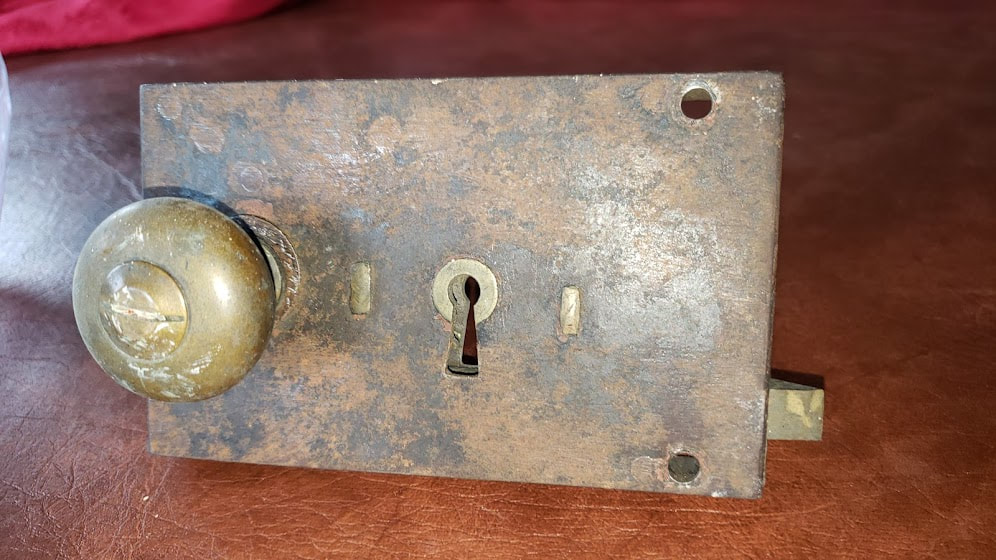

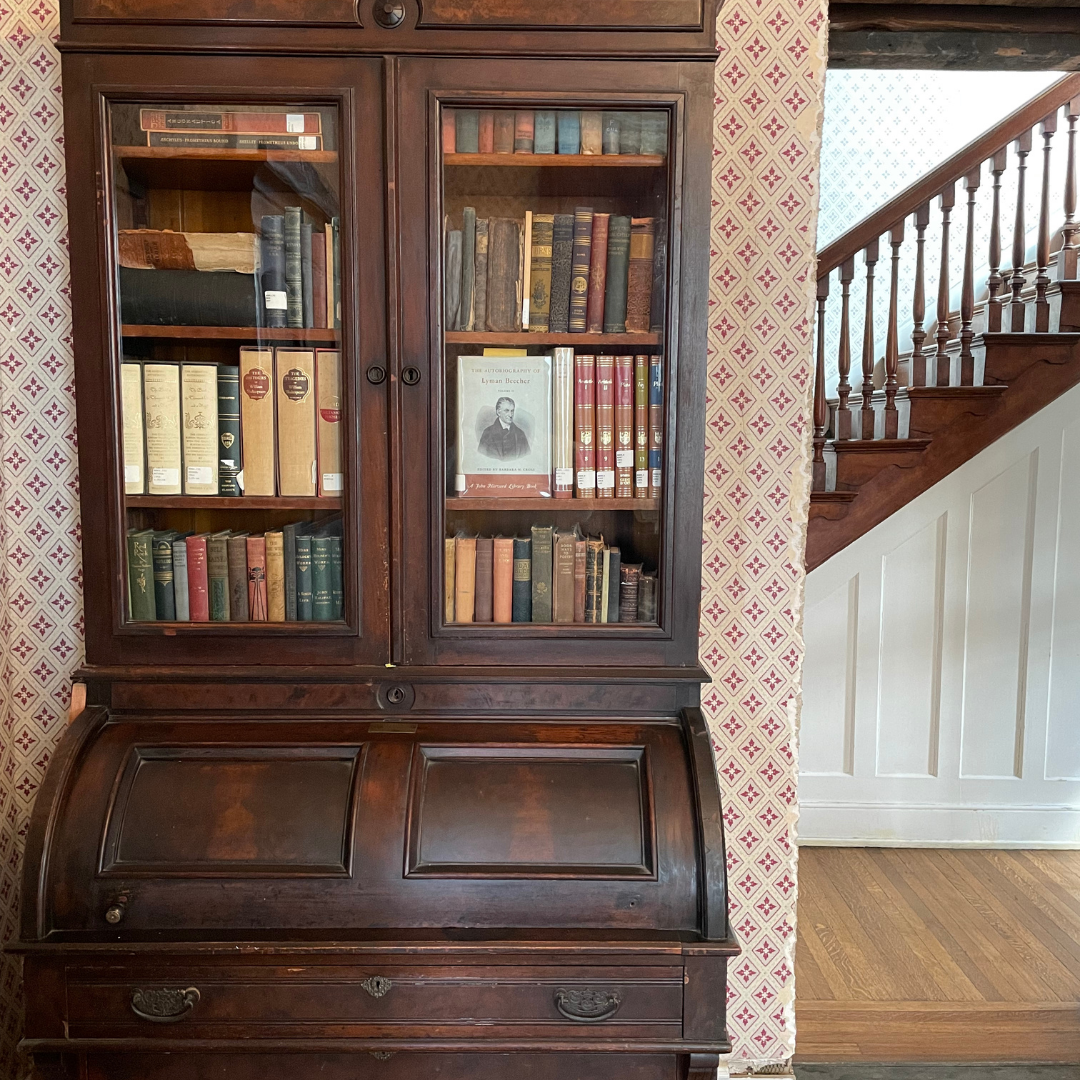
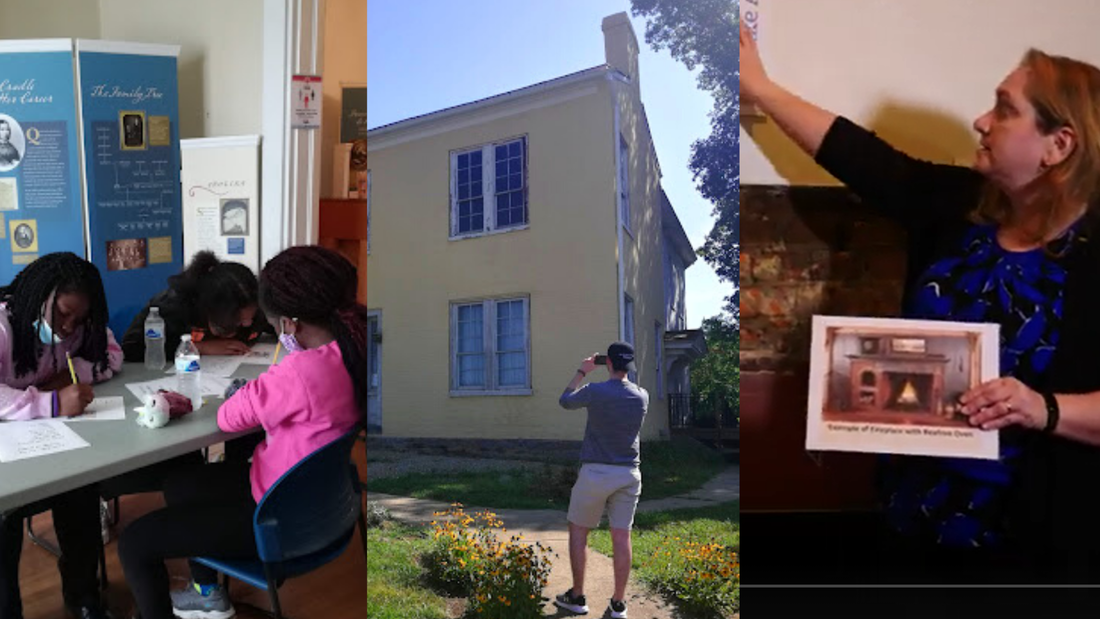
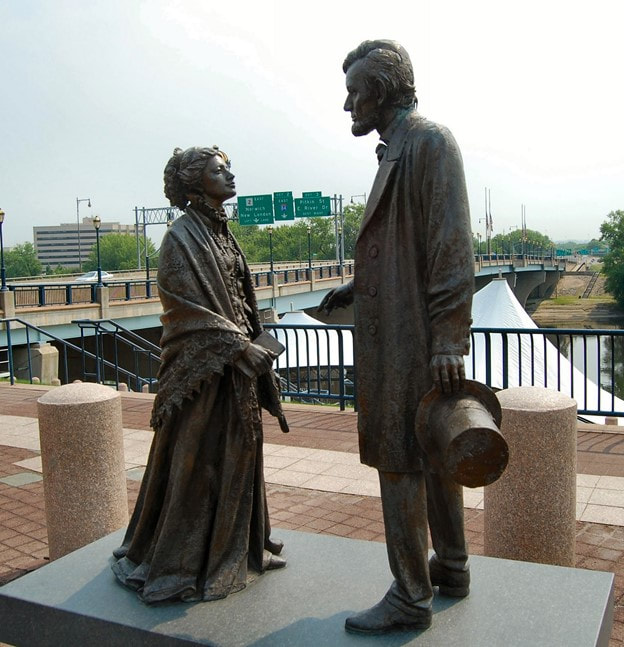
 RSS Feed
RSS Feed